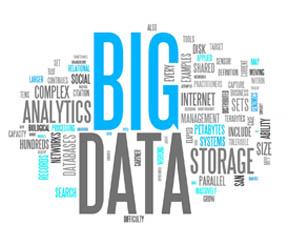When I first heard the terms “big data” and “deep learning,” I thought, Okay, more buzzwords created by some marketing person that will be forgotten in a year or so. However, these phrases are actually important and may influence nearly everyone — not just engineers.
Artificial intelligence (AI) and artificial neural networks (ANNs) were frequently discussed in the early ’70s. However, while some industrial robots got a little smarter, some medical diagnostics slightly improved, and Watson won at chess, nothing earthshaking came of these discussions.
The term “artificial neural network” comes from the fact that the software is based on the study of the brain and the neurons therein. The latest neural networks improve on classic AI because they learn from data and don’t require an expert to provide rules.
Neural networks improved recently, partly based on scientists’ better understanding of the brain, combined with faster, cheaper processors and the use of many-core GPUs. The newer networks consist of multiple layers, each of which looks at aspects of the problem. With deep learning, these layers will be adjusted in real time to be smarter about the particular problem — that is, they learn. An AI package can undergo training before being put to the task.
Each layer is a different set of mathematical operations or algorithms. The output of one layer becomes the input of the next. Loosely speaking, if a neural network is designed for image recognition, one layer will look for a particular set of features in an image — edges, angles, shapes, textures, or the like — and the next will look for another set. These layers make the neural networks deep and, generally speaking, if you make these networks deeper, it becomes easier for them to learn.
This learning may mean that fewer programmers are needed. For example, an engineer could write a very specific multi-layered program to execute a task that may take a few weeks to complete. Or, the software could train itself, perhaps creating its own program after about 10 hours of trial-and-error.
Big data is not just a collection of information. Machine learning techniques, including ANNs, look at large bodies of data, extract statistics, and classify the results. Deep learning networks have begun to successfully address problems such as image classification, language translation, medical diagnostics, and the identification of spam.

This year, Google researchers produced a system that can learn to play and master old Atari games without directions; Facebook built a way to let computers describe images to blind people; Microsoft showed off a new Skype system that can automatically translate from one language to another; and IBM singled out AI as one of its greatest potential growth areas.
Many companies are embracing AI, perhaps none more than Google. The Internet giant went from sporadic usage of deep learning in 2012 to applying it to, reportedly, 2,700 projects this year.
All of these projects may affect your work, and your life, sooner than you think and, in the long term, they may have deep consequences for privacy and security.
Advertisement
Learn more about Electronic Products Magazine





